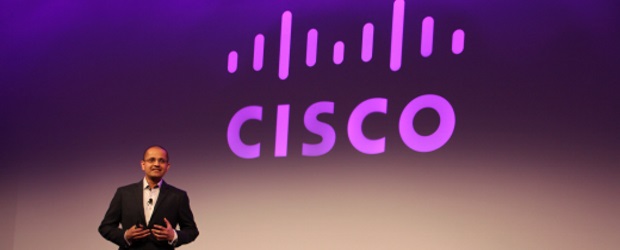Channel partners have an opportunity to see very good profits because they are needed more than ever in security, said Cisco Systems Inc., senior manager of channels business development, network and cyber security technologies, Dave Gronner.
Gronner points to two aspects of security that partners can jump in on: reselling architecture and selling billable hours through consulting. “These two [areas] fit together. It’s security being profitable while simultaneously driving partner professional services,” Gronner said over the phone with CDN.
A problem for customers in there is a glut of security vendors in the market, Cisco said. One customer may have one vendor covering their email, a separate vendor covering their web, and so on, and each of those solutions doesn’t talk with another. So many vendors makes the entire process too complicated, when there can be options to cover them all with just one or two vendors.
“We use the term, threat-centric defense,” said Gronner. “How we articulate this to both customers and partners is as you think of these threat vectors, then you can think about what layers of defense you need to apply to deal with them”
Cisco models its security solutions off this threat-centric defense idea. Essentially, it’s a layered security that increases security efficacy with each level of protection with solutions that are designed to protect a treat area (or areas) with multiple defense points.
With that in mind, Cisco identified seven threat defense areas:
- Email security: anti-spam, antivirus, malware protection, data loss prevention, encryption
- Web security: URL filtering, reputation, malware protection, application visibility and control, data loss prevention
- Cloud applications: protection for users/accoutns, data loss prevention, applications and workloads, infrastructure, malware protection
- Roaming users: smartphones, tablets, access control, malware protection, data loss prevention
- Endpoint users: workstations, laptops, smartphones, tablets, access control, guest, BYOD, malware protection, data loss prevention
- Campus and remote: firewalling, intrusion prevention, malware protection, data loss prevention, remote VPN, analytics
- Data centre: asymmetric HS fire-walling, HS intrusion prevention, malware protection, data loss prevention, virtual security, analytics
With the threat-centric defense, Cisco’s security offerings look to alleviate the pain point of a customer having a different security vendor handle each of those defense areas. This could be Cisco Umbrella, which is the company’s DNS/IP layer of security for the roaming user, or it could be Advanced Malware, the company’s advanced threat protection that covers the entire spectrum.
“Customers and partners are looking to Cisco to tie the dots and show them an architectural answer so that I don’t have to think about email separately from my web structure and my overall management, or whatever threat intelligence structure you might have,” said Gronner. “It doesn’t have to come from 50 different places when you can provide it from one place and apply it across the board.”
And if a partner isn’t reselling architecture offerings, channel partners can find opportunities selling billable hours through consulting, or through just selling managed services.
“This is another pain point for customers,” said Gronner. “A lot of customers would like to simple say, ‘You take care of it. You put into my network what I need, and then you watch the alarms, conditions, you tell me what’s going on.'”
This ties into the Security-as-a-Managed Service idea that Cisco security head David Ulevitch spoke about at the company’s partner conference in late March. If partners aren’t equipped to provide some of this architecture, they can instead sell it as a service that is Cisco-led.
“Not all partners are equally equipped right now. Thousands of partners in the world sell our security solutions, but they don’t necessarily deal with all threat vectors equally,” said Gronner. “That’s more of a market condition. It takes time for partner’s to catch up.”




